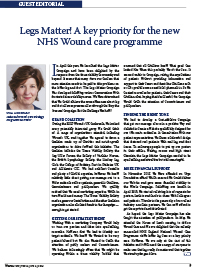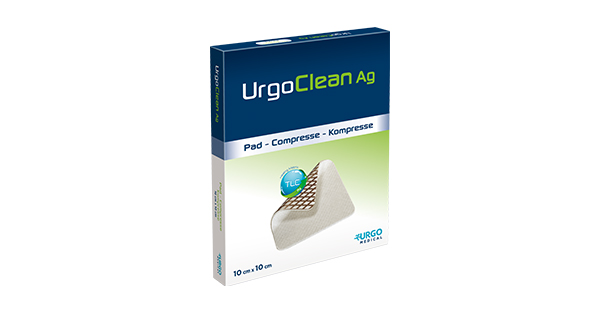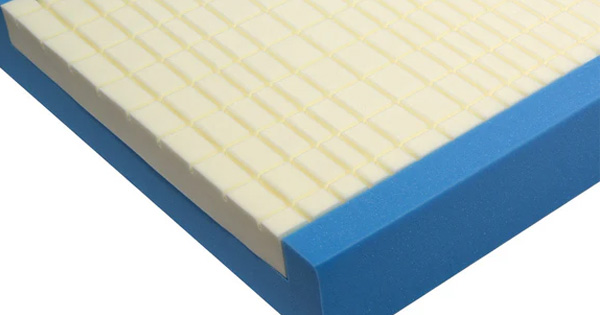In April this year, we launched the Legs Matter campaign and have been delighted by the response from the tissue viability community and beyond. It seems that many share our concern that more attention needs to be paid to skin problems on the lower leg and foot. The Legs Matter campaign was developed following various conversations with frustrated tissue viability nurses. We were determined that we could achieve the same awareness about leg and foot ulcers as pressure ulcers through the ‘Stop the Pressure’ campaign. But the challenge was how?
Grand coalition
During the 2016 Wounds UK conference, we invited every potentially interested group we could think of. A range of organisations attended, including Wounds UK, and together we agreed to form a coalition made up of charities and not-for-profit organisations to drive forward this initiative. The coalition includes the Tissue Viability Society, the Leg Ulcer Forum, the Society of Vascular Nurses, the British Lymphology Society, the Lindsay Leg Club, the College of Podiatry, Foot in Diabetes UK and Accelerate CIC. We had excellent contacts and plenty of clinical expertise, however, we knew relatively little about getting our message out to a wider audience such as patients, generalist clinicians, commissioners and policymakers. We quickly realised that we need marketing expertise, which in turn would need money. The Tissue Viability Society made a generous contribution and the other coalition organisations also allocated funds to the campaign — enough to get started.
Getting our strategy right
Working with a marketing company would help us turn our passion and ideas into eye-catching resources. However, first we had to identify our target audience. We knew we wanted to be very patient-focused but we also wanted to catch the attention of policy makers and commissioners. We became increasingly aware that we might be operating within a tissue viability ‘bubble’ that assumed that all clinicians knew what good care looked like when this probably wasn’t the case. It seemed unfair to campaign, raising the expectations of patients without providing information and support to their carers and front-line clinicians such as GPs, practice nurses and local pharmacists. So we created resources for patients, their carers and their clinicians first, hoping that if successful, the campaign would catch the attention of commissioners and policymakers.
Finding the right tone
We had to develop a cost-effective campaign that got our message across in a positive way and decided to create a website specifically designed for our two main audiences. In consultation with our patient representatives, we chose a colourful design that featured real patients with real leg and foot issues. To encourage people to put up our posters in their offices, waiting rooms and high street chemists, the Legs Matter campaign needed to be eye-catching and attractive but still meaningful.
More financial support
In November 2017, we were awarded an Urgo Foundation award which ensured we could deliver our website and gave some financial stability to the whole campaign. Following our launch in April 2018, we started receiving lots of requests for posters, leaflets and cards to share with colleagues and patients. Thanks to the generosity of our recent industry associate partners, we can now afford to get these printed and distributed.
As hoped, the Legs Matter campaign has also caught the attention of policymakers. In May, we attended the House of Lords meeting to discuss wound care and we are delighted that the recently announced NHS England National Wound Care Programme views lower leg care as a key priority area. However, we are only at the start of this initiative and it will need the energy of everyone to make sure that legs really do matter and that together we stand up for good care.







